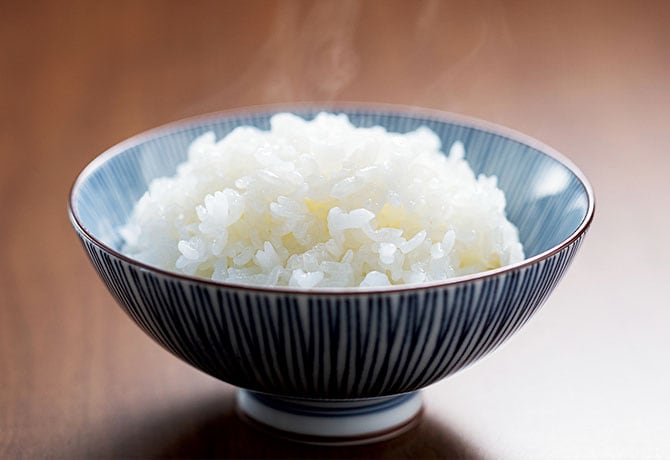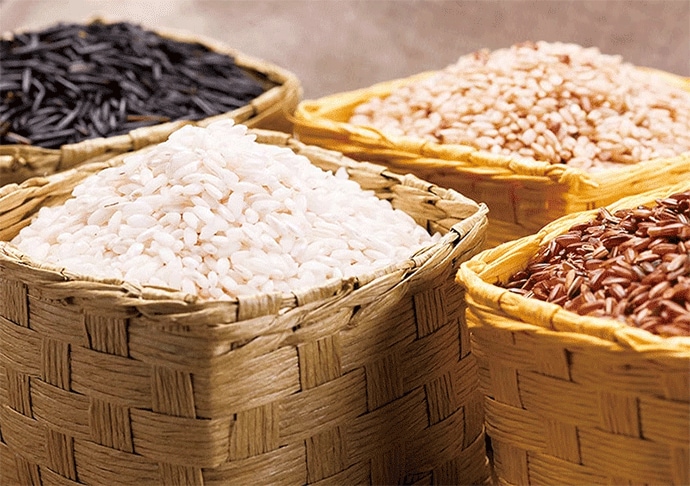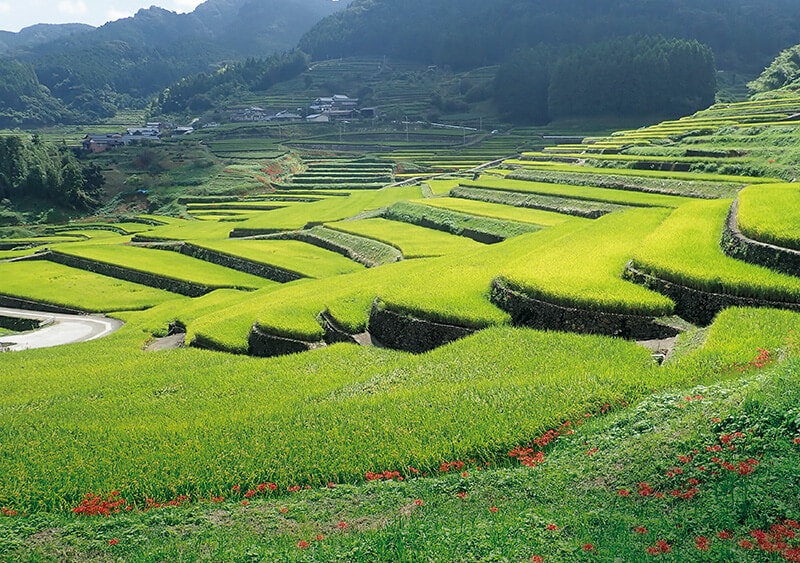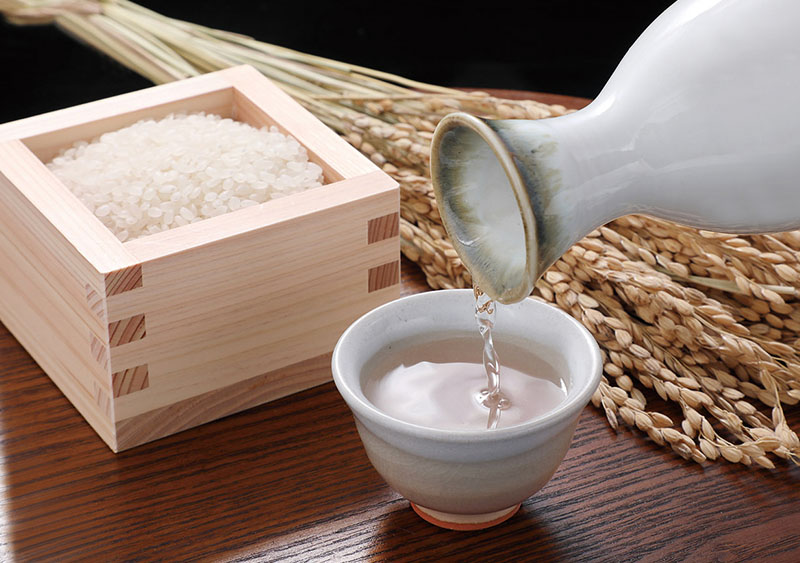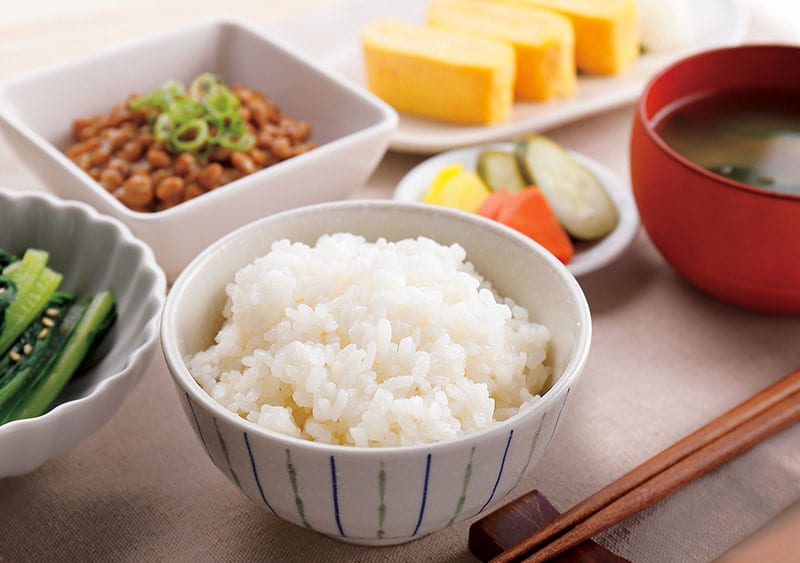
Preparation and Partaking
In this continuing series on rice, we introduce the different ways in which the country’s iconic staple grain has been cooked and consumed in Japan over the centuries.
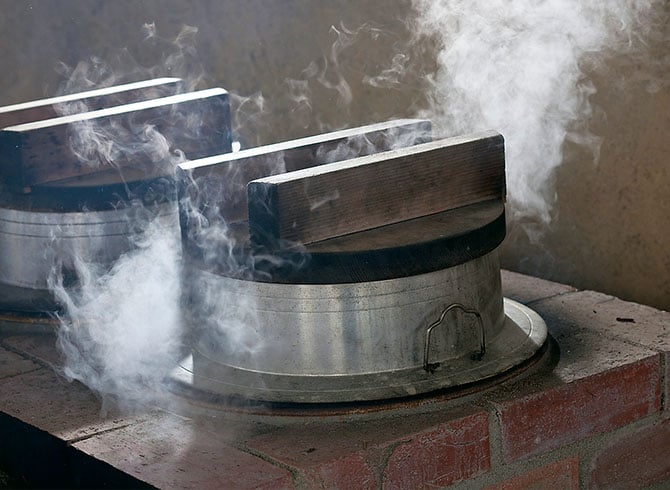
Rice is generally prepared and eaten as the whole kernel, in contrast to wheat or corn, which are ground into flour for consumption. In Japan, until the third century, rice kernels were apparently boiled with other grains. After the third century, primitive equivalents of contemporary steamers appeared; using such ware, rice steamed alone without other grains became the daily standard, and was called kowa-meshi (“hard rice”), which had a much firmer texture than rice consumed today. By the twelfth century, the kama flanged iron pot came into use— and nearly a thousand years later, it is still being used to cook rice. Roughly equal quantities of water and rice are placed in the kama pot. The amount of water used is calculated as being just enough to cook the rice through. The pot is tightly sealed with a heavy lid made of wood, which creates high pressure inside the pot. This pressure-cooking mechanism of the kama pot results in a much softer texture of cooked rice.
Polishing rice
The image of glistening mounds of white rice has long represented “bounty,” as yearned for by the Japanese. White rice, to the Japanese, refers to cooked polished white rice without bran, and is considered much tastier with a cleaner, softer texture compared to unpolished or semi-polished rice. Polished white rice was probably not available to most people until around the beginning of the Edo period (1603-1867), and even then, it was limited primarily to urban areas such as Edo (Tokyo). Records from that time indicate that wealthy Edo families might have eaten about 750 grams of polished rice a day, the equivalent of about 2,700 calories. In the mid-nineteenth century, it is said that members of Kyoto merchant houses, from the house head to apprentices, enjoyed about 450 grams of polished white rice per person per day. Prior to the Edo period, it seems that semi-polished rice was consumed, prepared by pounding whole rice with hulls using a mortar and pestle. During this hulling process, bran was partially removed from the surface of the kernel, producing whiter, partially polished rice. In the seventeenth century, techniques for completely removing the bran were developed, and in urban areas such as Edo and Kyoto, white rice became more generally available.
Staple food
Throughout Japan’s history, ways of eating rice and the amounts consumed have varied considerably by century, as well as by region. British travel explorer and writer Isabella Bird (1831-1904), traveling in the northern Tohoku region in the late 1870s, wrote that those living in mountainous regions did not so much eat “rice,” as they consumed more millet and buckwheat, evidence that, even at that time, rice was not the staple in some of the more remote parts of the country—although those living in such places would certainly have desired sufficient amounts of polished white rice. Even in western areas of the archipelago, people often ate what was called kate-meshi, rice supplemented with barley or other grains, along with diced vegetables such as sweet potato. The rice itself was likely only semi-polished. Consequently, although rice is often thought to have been the staple food of Japanese from antiquity, it might be more accurate to say that it was an unattainable, yet “yearned-after staple,” as one researcher aptly put it.
Modern cookers
Modernization brought changes to the way rice was cooked. Just one hundred years ago, in 1924, the electric rice cooker was invented, making it possible to cook rice with electricity rather than over a wood fire. Twenty years afterward, electric rice cookers that turned off automatically when rice was done were introduced to the market. Standard practice was to transfer cooked rice from the pot or cooker to a covered wooden tub called a hitsu that would absorb excess moisture and make the rice fluffy for eating. The drawback of this practice was that the cooked rice becomes hard and less tasty over time. Rice cooled quickly, especially during the winter season, and cold rice was often eaten by pouring hot water or tea over it. The disagreeable experience of eating cold rice inspired the Japanese phrase, “eating cold rice,” as a metaphor for misery, or for being treated poorly. In the 1970s, new electrical appliances were devised to keep rice warm after it was cooked, and “cold rice” became a thing of the past.
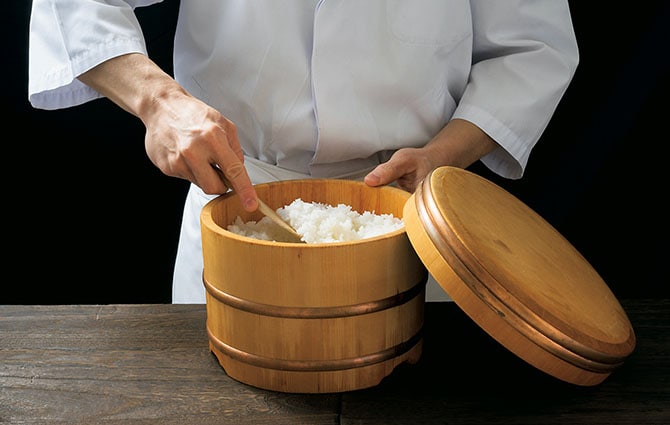
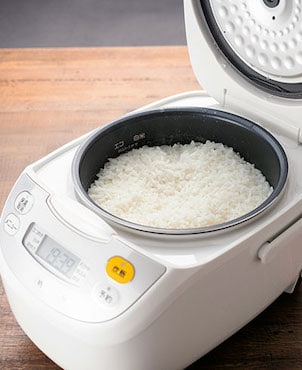
function for cooked rice.
Rice consumption
In the 1960s, the national average daily rice consumption reached about 330 grams, or 120 kilograms per person per year, and it was then that rice did indeed become the staple of the “Japanese national diet.” From that time, however, rice consumption actually decreased. In response to today’s smaller families, rice cookers themselves are now marketed in smaller sizes, including those with a capacity to cook only one go or cup (0.18 liters) at a time. The go is a very old Japanese measure of volume that is still commonly used as the unit of measure for rice and sake.
Food for the spirit
Rice has long been an offering made to kami (deities) in shrines, where offerings also include sake, mochi glutinous rice cakes and salt. All of these are characterized as “white,” and thus are associated with purity. The fact that three of these four items are rice or derived from rice is an indication of the high status that rice holds in Japanese society. Although the quantity of rice consumed today has declined, people’s appreciation and respect towards rice as part of Japanese culture and cuisine remain essentially unchanged. Rice, with all its cultural, social and traditional significance, remains integral to the Japanese spirit.
